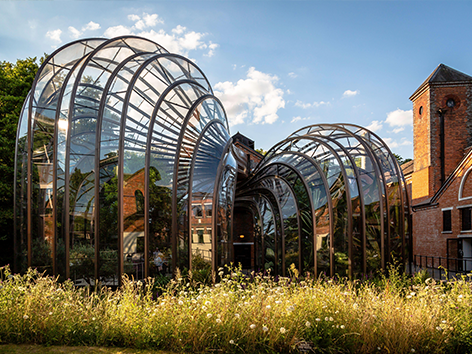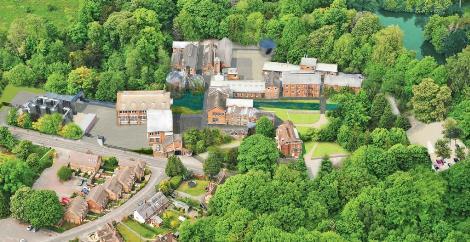Bombay Sapphire first refurbishment project to get BREEAM Outstanding
Overview
The five acre Laverstoke Mill was a complex site that included Grade II listed buildings in a conservation area, a site of special scientific interest (SSSI) and a section of the River Test, which flows directly through the site. When Bombay Sapphire took over the site, it was first ever refurbishment project to achieve a BREEAM Outstanding rating in the world. It was also the first distillery to be BREEAM Outstanding certified.
About
Bombay Sapphire are a world-renowned producer of premium gins.
Background
Sustainability was vitally important to Bombay Sapphire at Laverstoke Mill. The design of a low carbon, BREEAM assessed, flagship distillery underpinned the design brief, which was supported by the client and design team from the outset.

Solutions
There was a strong desire to reduce any impact on the existing environment, and ‘cradle to grave’ considerations formed a major part of the design philosophy. This included the recycling and reuse of existing building materials from demolished buildings across the site, and an ingenious idea to reuse spent botanicals from the distillation process as fuel for the biomass boiler – supplying heat and hot water to the whole site.
The use of cutting edge technologies was encouraged by the client. This has seen a multi-functional renewable energy strategy implemented – including a 6kW hydro-electric turbine located in the River Test.
Arguably the most impressive element has been the level of consultation and social responsibility adopted by the design and construction teams. In addition to engagement with a host of local and national bodies, there has been extensive community involvement. This has seen local residents build up a strong relationship with the construction works, which played host to local parish council meetings and local/national media events.
Benefits
The project scored 100% of available credits in the energy and management categories and more than 90% of credits in the water, materials and waste categories. There was an additional 5% worth of innovation credits scored for exemplar performance levels achieved.
Key environmental benefits:
EPC rating of ‘A’ – CO2 Index of 14
Building related carbon emissions less than 4kgCO2/m2
Renewable and low carbon energy, provided by a biomass boiler, photovoltaic array and hydro-electric turbine in the River Test, gives carbon savings of 38%
The biomass boiler also provides heat and hot water, using by-products from the gin distillation process as a fuel source
Key building materials, including bricks and roof tiles, have been recycled and reused from demolished buildings
More than 80% of the existing building structure retained
Rainwater harvesting and flow restricted water devices specified throughout
Ecology and biodiversity in the conservation area SSSI significantly enhanced
Part of the works included a major river diversion – the fish were relocated by a team of specialists by hand
Contractor site management, CCS and stakeholder consultation reached exemplar levels
Reflecting on the success of the project outcome, Nik Fordham, Master Distiller The Bombay Spirits Company, shared “Sustainability is vitally important to Bombay Sapphire. It runs through all that we do, and has underpinned all of our plans for the distillery. As such, we were delighted to achieve an outstanding BREEAM design stage accreditation for the distillery process buildings.”
He continued “BREEAM has kept sustainability high up the agenda and has provided a benchmarking mechanism that feeds into our corporate sustainability policy and key performance indicators. Fundamentally, we also believe building such a sustainable distillery makes financial sense, increasing efficiency and long term operational energy and water use savings, which is why we are heating our glass houses using recovered heat from the distillery and using our spent botanicals to partially fuel our Biomass boiler.”

